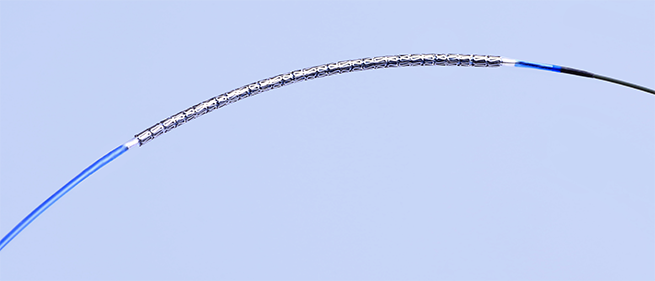Results from the REDUCE trial presented at the 29th annual Transcatheter Cardiovascular Therapeutics (TCT) scientific symposium in Denver, USA, provide new insights into the optimal treatment of patients with acute coronary syndrome (ACS) using a dual-therapy stent.

REDUCE (Short-term Dual Anti Platelet Therapy in Patients with ACS Treated with the COMBO Dual-therapy Stent), a physician-initiated, prospective, multi-centre, randomised study, was conducted in 36 hospitals in Europe and Asia, enrolling a total of 1,496 ACS patients. The study was designed to demonstrate non-inferiority of a strategy of short-term (three months) dual antiplatelet therapy (DAPT) compared to standard 12-month DAPT in patients with ACS treated with a dual-therapy stent.
The stent used in the study COMBO™ (OrbusNeich) is a sirolimus-eluting stent with an abluminal biodegradable polymer matrix, and a nanometer thick CD34 antibody covering designed to improve healing following deployment. It was the world’s first dual therapy stent launched in 2013.
The trial found no difference in the primary end point (a composite of all-cause mortality, myocardial infarction, moderate to major bleeding) between three and 12 months DAPT (8.2% vs. 8.4%, respectively) in the intent to treat (ITT).
The optimal duration of DAPT in ACS patients treated with DES is the subject of much debate. The potential benefits of long-term DAPT in avoiding thrombotic complications may be counterbalanced by a higher risk of major bleeding complications. In US and European guidelines, DAPT is typically continued for at least 12 months following percutaneous coronary intervention (PCI) with drug-eluting stents (DES) or bare metal stents (BMS), primarily based on the CURE trial that was conducted 20 years ago, and the use of first generation DES. REDUCE provided an opportunity to explore different DAPT regimens with a new generation stent.
Among the secondary end points, major bleeding rates were similar among the short-term and long-term treatment arms (2.5% vs. 3.0%, respectively, p=0.54), with non-significantly different rates of overall mortality (1.9% vs. 0.8%, p=0.07), cardiac mortality (1.1% vs. 0.4%, P=0.13), and definite/probable ST (1.2% vs. 0.4%, p=0.08), between the two arms, although the study was not powered to assess these individual end points.
“The REDUCE trial shows that among ACS patients treated with a COMBO stent, three months of DAPT is non-inferior to 12 months of DAPT, and this is consistent for all pre-specified subgroups,” said principal investigator, Dr Harry Suryapranata, (Professor of Interventional Cardiology at Radboud University Medical Center in Nijmegen, The Netherlands). “Therefore, this strategy could be considered if needed, even in an ACS population.”
More news in this issue:
NICE publishes updated familial hypercholesterolaemia guidance
Primary Care Cardiovascular Society announces its relaunch
New series on insights from the Bradford Healthy Hearts project
Cardiff Met launches stroke research hub
New test hopes to boost med school recruitment
